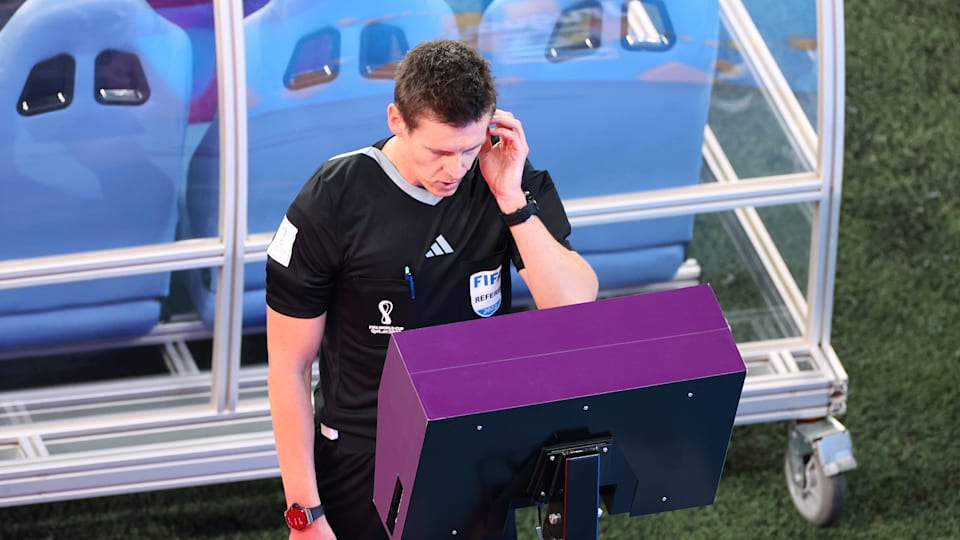
Over the past few years, Video Assistant Referee or VAR has become an integral element of football matches.
The biggest football competitions in the world, including the Premier League, Bundesliga, Euros and the FIFA World Cup have all adopted the VAR.
What is VAR
In a nutshell, VAR is a technology-aided officiating system intended to assist on-field referees to make accurate decisions during crucial junctures of a football match.
The VAR team monitors the game remotely on multiple screens and has real-time access to video footage of the match through multiple camera angles.
Usually, a VAR team consists of a VAR official, who is usually a former or current referee, three assistant video assistant referees (AVARs) and a video replay operator.
Unlike other sports like hockey or cricket, where the referee/umpire or players need to ask for video reviews for certain decisions, VAR continuously monitors play and automatically alerts the referee in case it deems that a wrong decision may have been taken during the course of a play.
However, VAR can only intervene in four specific situations where a ‘clear and obvious error’ or ‘serious missed incident’ might have occurred. These reviewable incidents are:
- Goals/no goals: This includes checking for offsides, encroachment during penalties and whether the ball crossed the line.
- Penalty/no penalty: This includes checking if there was contact inside the box, if it was a simulation, or if the wrong foul was given.
- Direct red cards (not second yellows): This includes reviewing if the foul was serious enough for a red card, if it was mistaken identity, or if the wrong player was sent off.
- Mistaken identity: This is used to check if the referee sent off the wrong player.
An on-field referee can ask for a VAR check only after he has made a decision. Even if the referee doesn’t ask for a VAR check, the system can alert the referee through his earpiece if it deems that there has been an obvious error.
In these cases, the referee can either opt to change or overturn his decision based on VAR’s recommendation (VAR-only review) or review the footage of the incident themselves on a field-side monitor (on-field review).
In either case, the final decision rests with the on-field referee while VAR can only make recommendations and advice.
How was VAR born and brief history
The idea of VAR was first conceived as part of the ambitious Refereeing 2.0 project devised by The Royal Netherlands Football Association (KNVB) in 2010. It sought to introduce the effective use of technology in making on-field decisions by football referees more error free.
While the goal-line technology, which was also under the same project, soon found mass adoption and was accepted by FIFA after trials in 2012, VAR took more time to gain traction.
After several mock trials, the first-ever live trial of the VAR system was conducted in a friendly match between Eredivisie sides PSV and FC Eindhoven in July 2016. In international football, VAR was first used in a friendly match between Italy and France on September 1, 2016.
Meanwhile, the first professional football game with VAR presence was an official first round KNVB Cup tie between Ajax and Willem II on September 21, 2016. This was also the first time that a pitchside monitor was introduced with VAR. The 2017 FIFA Confederations Cup marked the first instance that VAR was used in an international tournament.
The A-League in Australia was the first top-flight league to adopt VAR in 2017 and was soon followed by the Major League Soccer (MLS) in the USA. Among the European elites, Germany’s Bundesliga and Italy’s Serie A adopted VAR in the 2017-2018 season while Spain’s La Liga and France’s Ligue 1 introduced the technology in 2018-2019.
England’s Premier League introduced VAR in the 2019-20 season.
VAR’s adoption in the FIFA World Cup 2018 in Russia was a major landmark and eventually paved the way for the system’s integration in the UEFA Champions League in 2018-19.
